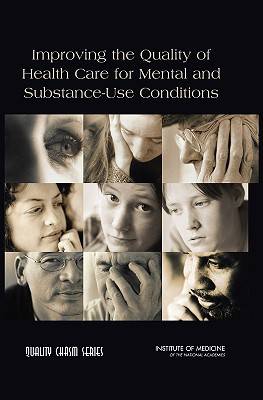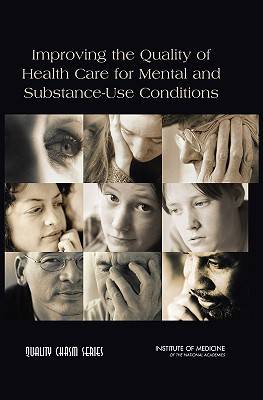
- Afhalen na 1 uur in een winkel met voorraad
- Gratis thuislevering in België vanaf € 30
- Ruim aanbod met 7 miljoen producten
- Afhalen na 1 uur in een winkel met voorraad
- Gratis thuislevering in België vanaf € 30
- Ruim aanbod met 7 miljoen producten
Zoeken
Improving the Quality of Health Care for Mental and Substance-Use Conditions
Institute of Medicine, Board on Health Care Services, Committee on Crossing the Quality Chasm Adaptation to Mental Hea
€ 68,45
+ 136 punten
Omschrijving
Each year, more than 33 million Americans receive health care for mental or substance-use conditions, or both. Together, mental and substance-use illnesses are the leading cause of death and disability for women, the highest for men ages 15-44, and the second highest for all men. Effective treatments exist, but services are frequently fragmented and, as with general health care, there are barriers that prevent many from receiving these treatments as designed or at all. The consequences of this are serious--for these individuals and their families; their employers and the workforce; for the nation's economy; as well as the education, welfare, and justice systems. Improving the Quality of Health Care for Mental and Substance-Use Conditions examines the distinctive characteristics of health care for mental and substance-use conditions, including payment, benefit coverage, and regulatory issues, as well as health care organization and delivery issues. This new volume in the Quality Chasm series puts forth an agenda for improving the quality of this care based on this analysis. Patients and their families, primary health care providers, specialty mental health and substance-use treatment providers, health care organizations, health plans, purchasers of group health care, and all involved in health care for mental and substance-use conditions will benefit from this guide to achieving better care.
Specificaties
Betrokkenen
- Auteur(s):
- Uitgeverij:
Inhoud
- Aantal bladzijden:
- 528
- Taal:
- Engels
- Reeks:
Eigenschappen
- Productcode (EAN):
- 9780309100441
- Verschijningsdatum:
- 29/04/2006
- Uitvoering:
- Hardcover
- Formaat:
- Genaaid
- Afmetingen:
- 156 mm x 236 mm
- Gewicht:
- 961 g

Alleen bij Standaard Boekhandel
+ 136 punten op je klantenkaart van Standaard Boekhandel
Beoordelingen
We publiceren alleen reviews die voldoen aan de voorwaarden voor reviews. Bekijk onze voorwaarden voor reviews.











